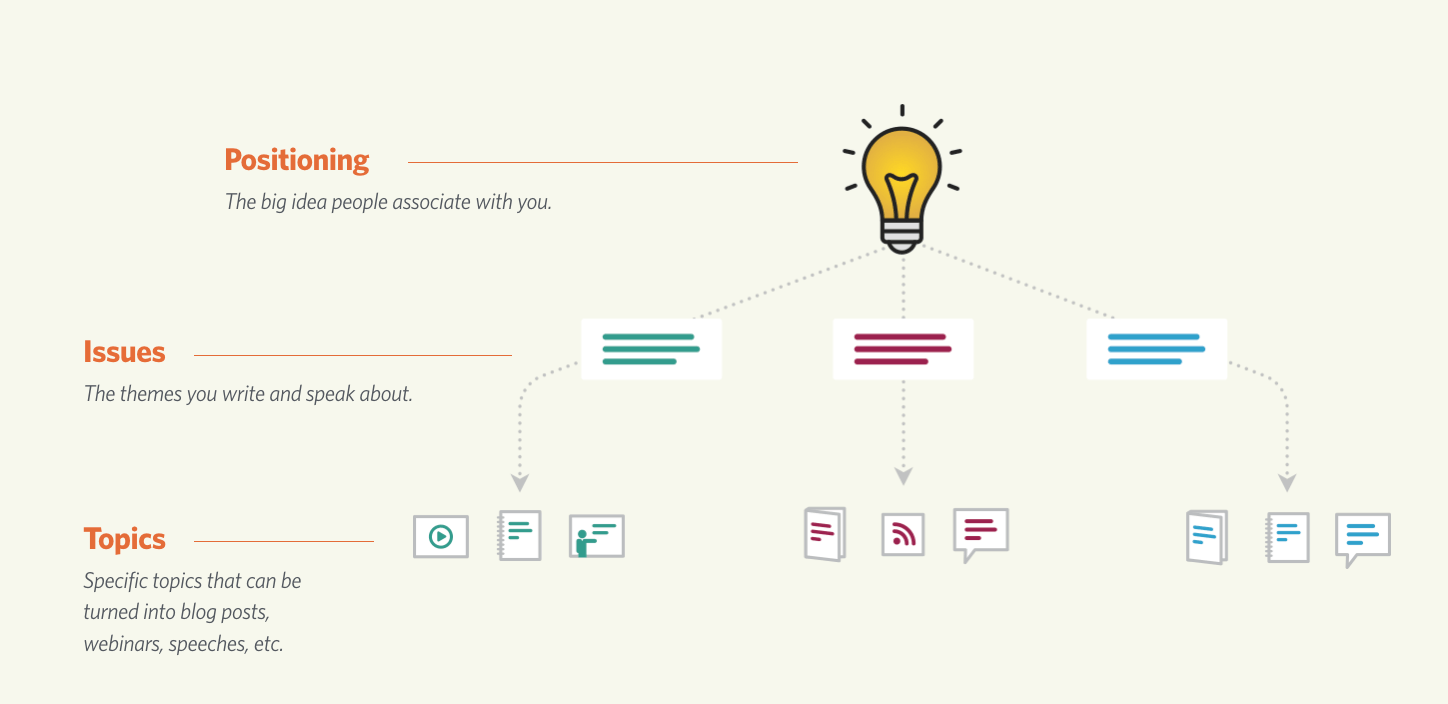Brands can be intangible. In the B2B marketplace, we experience brands through a series of interactions like reading a blog post, attending a webinar, exchanging emails with sales reps, and ultimately receiving some kind of product, service or other deliverable.
In my years doing research at Hinge, I’ve studied hundreds of professional services brands. These businesses range from complex conglomerates to tech-focused startups; traditionalist boot-strappers to global entities. Some of these brands thrived with boastful client advocates and enthusiastic employees. Others suffered from tarnished reputations, bad client experiences and incompetent staff.
But one thing all of these firms have in common is they know — empirically — how their brand is perceived in the marketplace by doing research.
In B2B, a brand study is an objective evaluation of how a company is perceived by their target audience. It looks at the big picture: the buyer’s journey, client experience and beyond. A successful study will measure specific brand attributes like value, delivery, referral potential, reputation and visibility.
When our clients go through this exercise with Hinge, we examine feedback provided by their buyers, referral sources, and employees. I’m amazed by how intelligent and sophisticated buyers of professional services can be. The way they articulate and describe the business challenges they face, how they search for solutions and what criteria they use to evaluate vendors… It is incredibly insightful and proves time and time again to be powerful ingredients in building a strong brand.
Many B2B marketers today take full advantage of conducting brand studies. But what insights do they gain? How does this kind of market research impact their business? Here are the top 6 B2B marketing benefits of doing a brand study.
1. To uncover differentiators
In our latest research study, we found differentiation to be one of the top marketing priorities of high-growth professional services firms. But differentiation is not so easily achieved. I see it all the time looking at company websites:
“We’re a one-stop shop for all your needs.”
“We’re dedicated to our clients.”
“Our people are the difference.”
“We offer solutions that drive results.”
Sound familiar?
With over 40% of professional services firms viewing unpredictability in the marketplace as a top challenge facing their business, now is the time to think about what messages grab the attention of your prospective buyers and keep them engaged while setting you apart.
But how are these service providers supposed to know what truly sets them apart?
Taking a sample of your ideal clients in a brand study will give you a glimpse into how your brand is viewed from outside your company walls. This data often surfaces compelling differentiators for your business, enabling you to position your business to add more value and increase billing rates.
2. To develop a relevant brand story
Target audiences aren’t always prospective clients. Attracting and retaining talented employees is a growing concern among professional services firms. In fact more than one-third of the market today view this as a challenge or threat to their business.
Your brand should give target clients a reason to care. What purpose does your business serve? How are you going to help them solve their most pressing challenges?
A brand study can illuminate important values, themes and topics that resonate with your target buyer. In turn, these insights can be developed into a relevant brand story that positions your business as the expert needed to solve their most pressing business challenges.
3. To clarify your brand message
According to RAIN Group, a B2B sales training service provider, it takes an average of 8 touch points just to get an initial meeting with a new prospect. If a brand message is inconsistently articulated across these different touchpoints, brand stories and differentiators can get lost. Or worse, buyers become confused.
By surveying your client-facing employees as part of a brand study, you are able to measure gaps in perception between clients and staff. For example, your employees may believe that responsiveness and cost are the biggest selection criteria, but clients may place more emphasis on experience and expertise. As you can imagine, these differences in perception can entirely change the direction of your marketing messages.
Once these perception gaps are understood, many of our clients provide company-wide training initiatives to share what they learned in the brand study. This is a great way to foster communication and to close these gaps, resulting in a clear, cohesive brand message.
4. To integrate newly merged or acquired brands
If you hear staff use the word “legacy” when referring to a parent company or brand, be wary. This is a sign of misalignment among merged or acquired brands. Ignoring this can be damaging to your culture and erode brand strength and reputation in the marketplace.
Last year, a regional accounting firm had grown rapidly by strategically acquiring smaller firms for their specialized service offerings. The services they added were complementary and the acquisitions brought valuable talent with them, but the resulting “house of brands” lacked cohesive positioning and messaging. This firms faced a few common challenges when integrating newly merged or acquired brands. They needed:
- To understand the brand strength of the firms they acquire to help them decide how to integrate the new company.
- To understand overarching brand themes to uncover common ground and unify internal teams.
- To develop a repeatable strategy that can be applied to future acquisitions.
By doing a comprehensive brand study with Hinge, this company was able to quantify the strength of acquired brands and uncover synergies and areas of conflict. They used these insights to develop holistic brand positioning and an acquisition plan for future mergers.
5. To source content for marketing campaigns
Through a comprehensive suite of research, firms are able to reposition their brands to emphasize aspects of their brand that mean the most to their clients and prospects. This approach has created many new opportunities for some of our clients.
If you are able to uncover specific issues or topics that are pain points for your target client base, this is a gold mine for a content marketing campaign.
Broader issues can be broken down into specific topics. This content framework (illustrated below) is a proven way for professional services firms to do content marketing. Many of our clients source their content from insights uncovered in an extensive brand study.

6. To optimize your marketing budget
Unfortunately, marketing can be seen at times as a cost center rather than an area for strategic investment. If you’re among the marketers on the wrong side of this battle, then doing a brand study could be a way to optimize your marketing efforts.
Take the guess-work out of the equation. To streamline and optimize your marketing efforts and to develop a highly focused marketing campaign, you must answer these questions:
- who is your target buyer?
- what challenges are they faced with?
- where do they go to learn more?
- when do they consume specific content along their buyer journey?
- how do they evaluate service providers?
- why are they exploring solutions?
By using this client-centric marketing model, your marketing team will be agile enough to tailor the marketing messages to maximize impact.
How Hinge Can Help
Nothing uncovers what motivates your audiences like brand research—and research is an integral part of Hinge’s powerful approach to marketing. Learn more about our research services or contact us to learn whether research makes sense for your professional services firm.
Additional Resources
- Our Professional Services Guide to Research gives you the tools and knowledge you need to lead your firm through conducting research.
- Understand your buyers. Win more business. Read the latest findings from, Inside the Buyer’s Brain – Fourth Edition, the biggest study of professional services buyers to date. It’s free!

